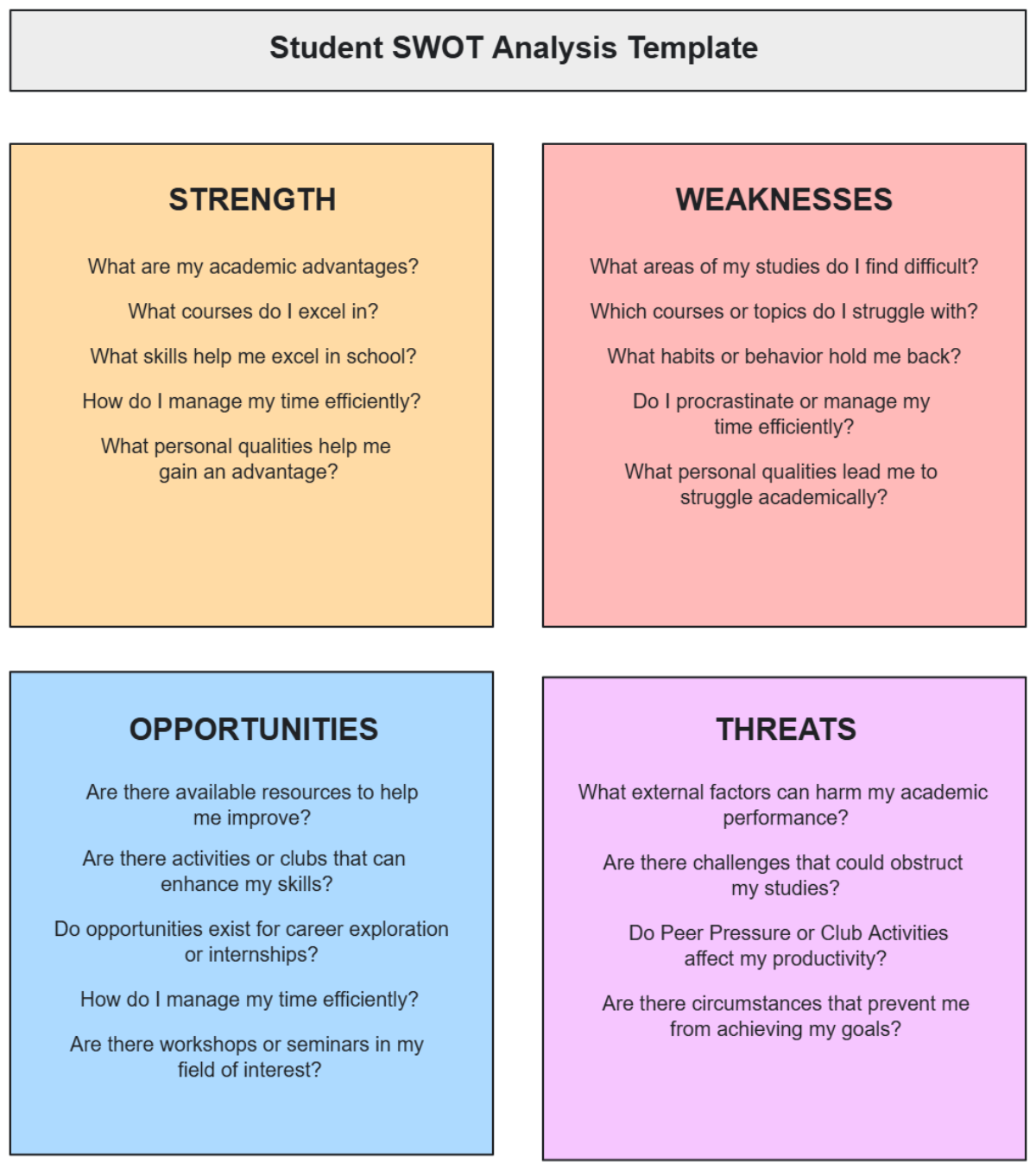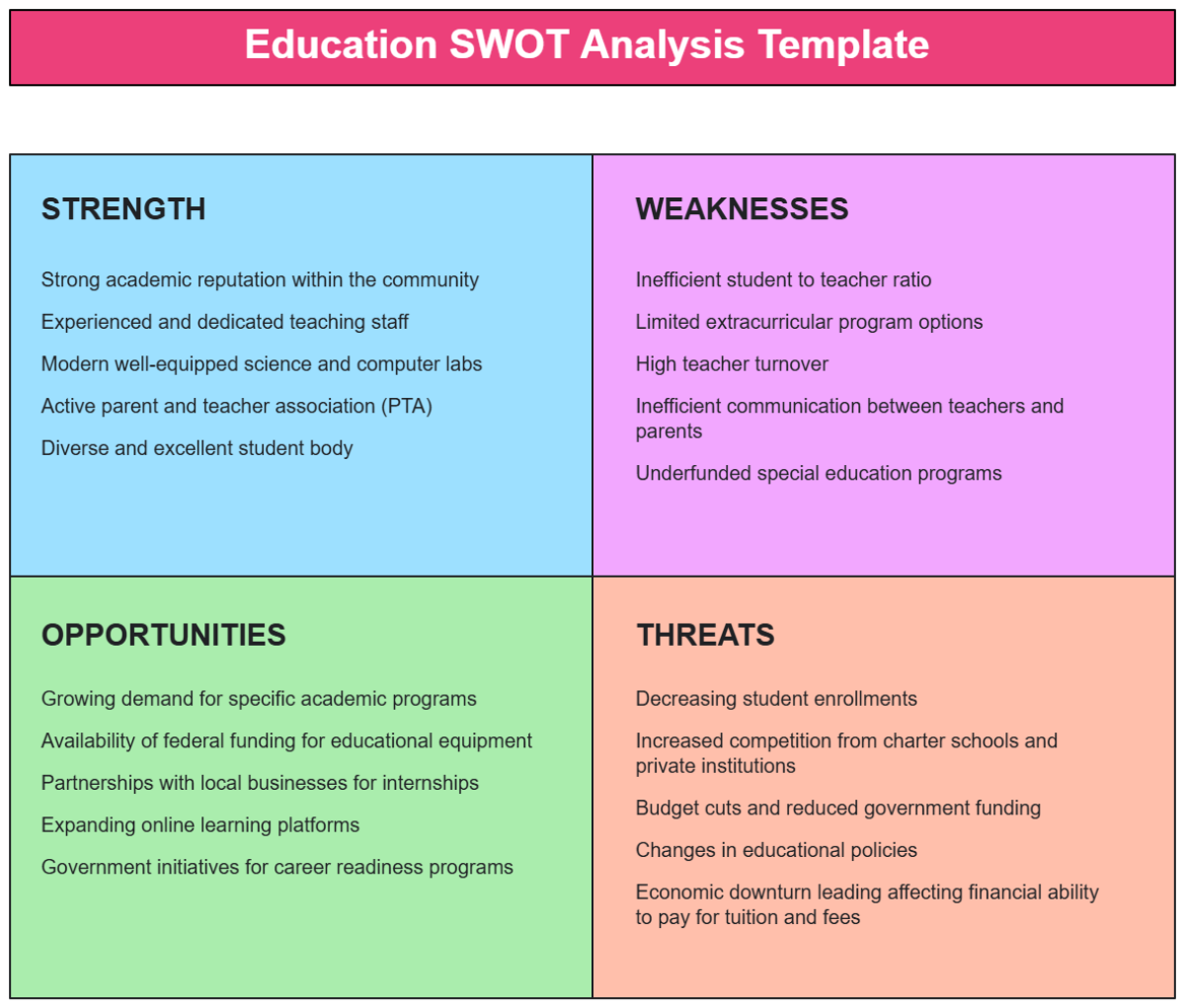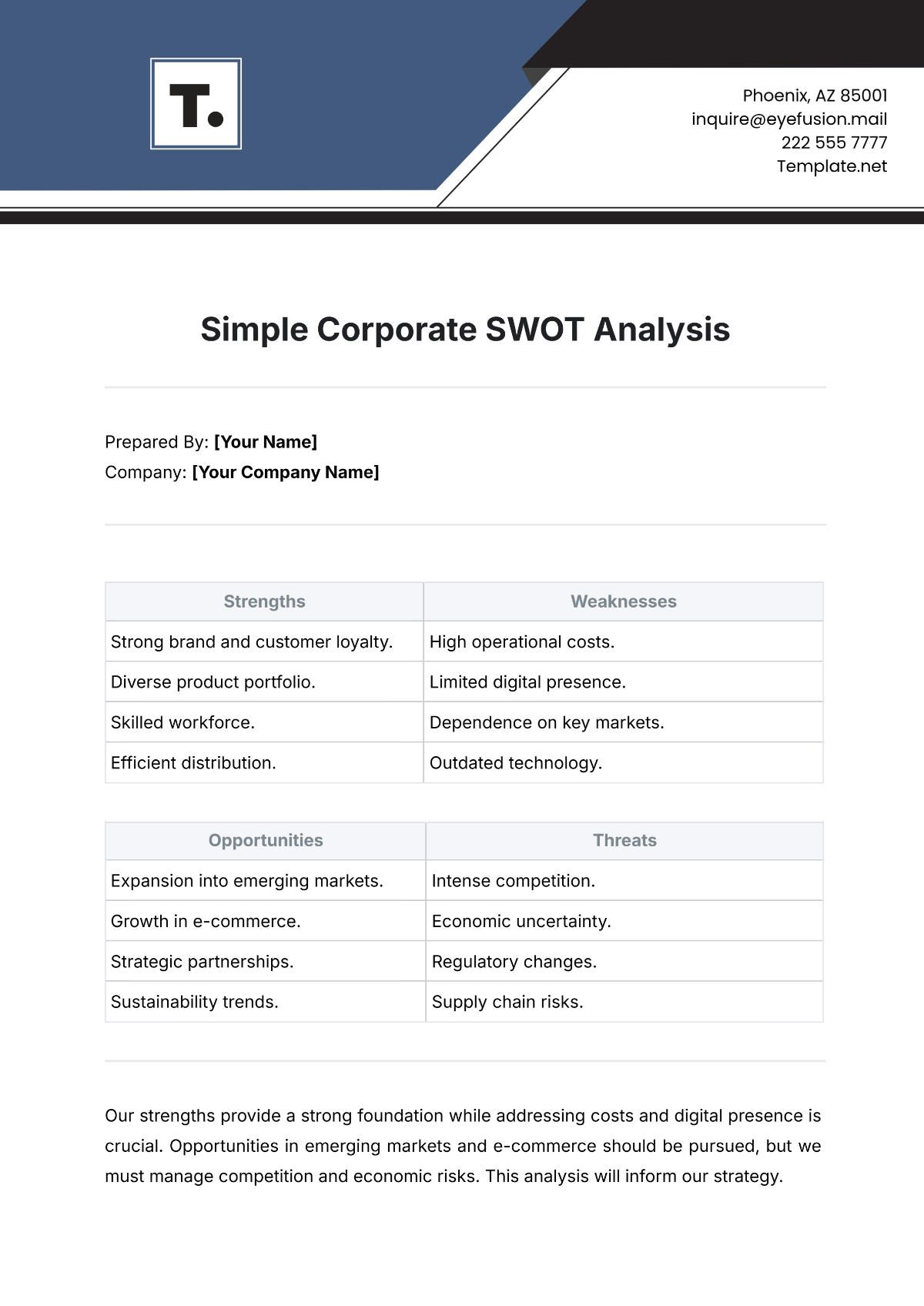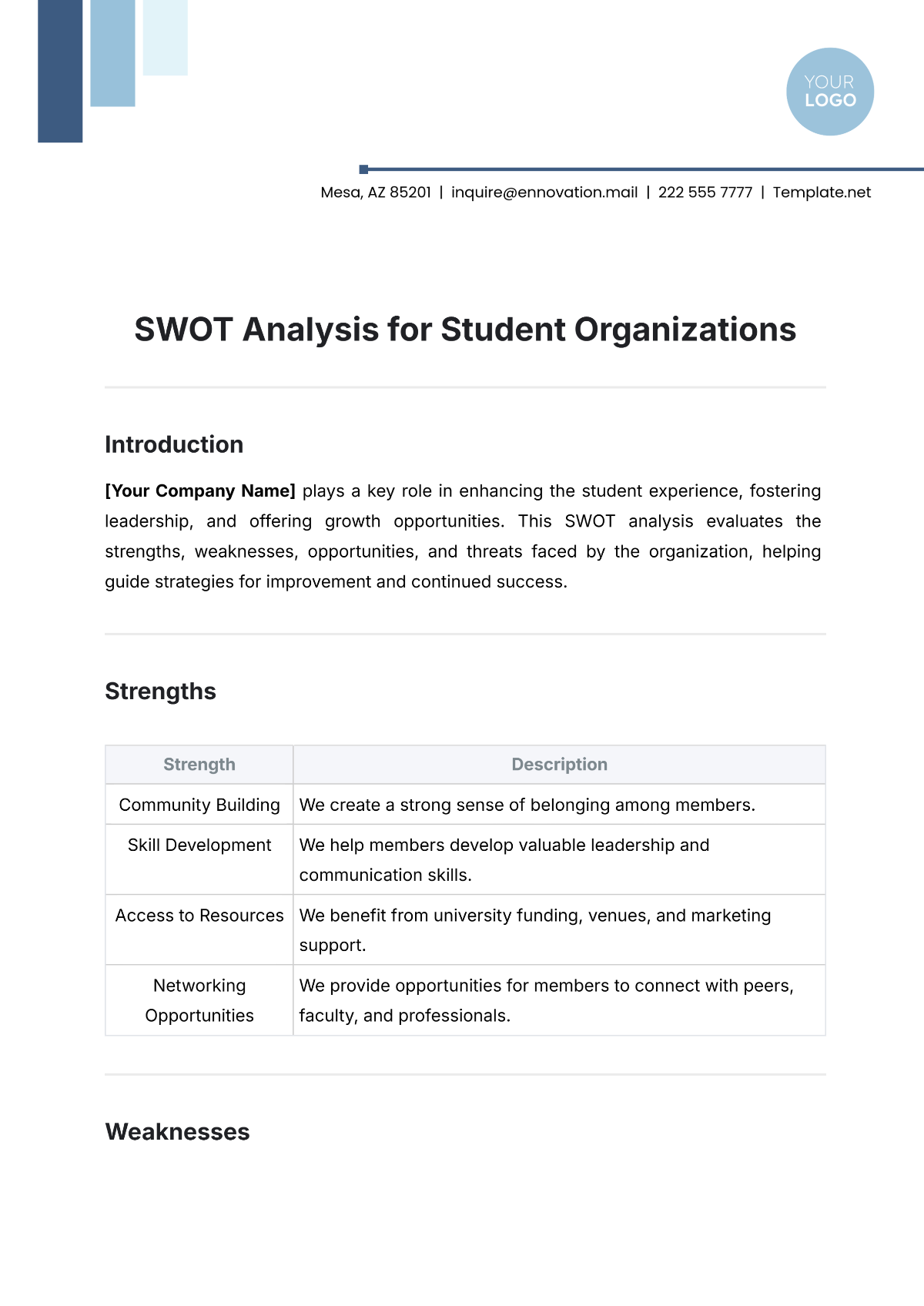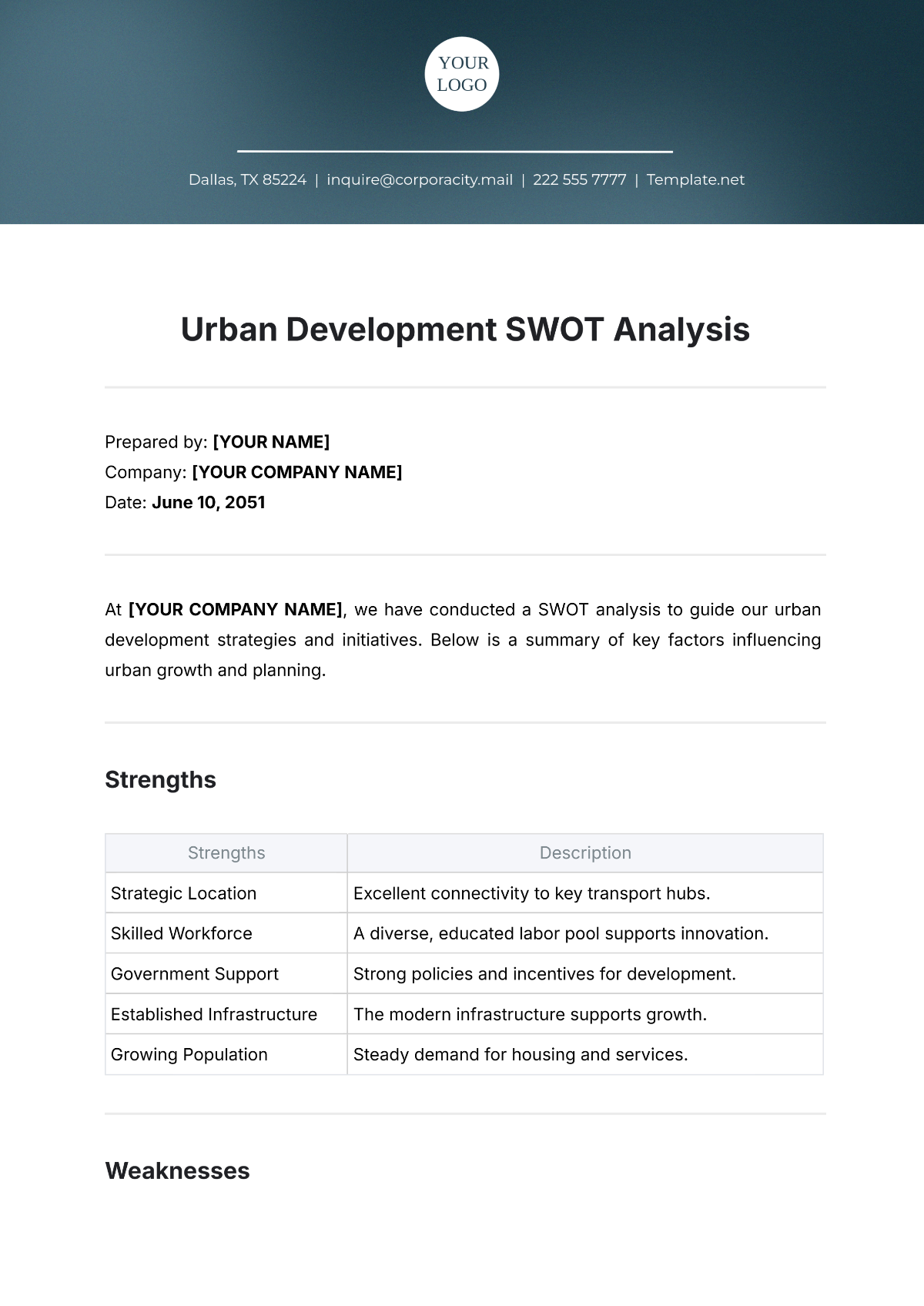Cosmetic Store SWOT Analysis
I. Introduction
[Your Company Name] has established itself as a leader in providing innovative and high-quality beauty products to a broad and diverse customer base. As we enter the year 2050, the global cosmetics industry faces a series of transformations driven by emerging technologies, increasing consumer demand for sustainability, and new market dynamics. To maintain and expand our position in this competitive environment, it is crucial to conduct a detailed SWOT (Strengths, Weaknesses, Opportunities, and Threats) analysis. This report aims to provide an in-depth assessment of the internal and external factors affecting [Your Company Name] as we work to capitalize on the strengths, overcome the weaknesses, seize opportunities, and mitigate the threats that lie ahead.
A comprehensive SWOT analysis serves as a vital tool in guiding [Your Company Name]'s strategic decision-making. It offers insight into what makes our brand successful, where improvements are needed, and how external factors—both positive and negative—will influence our future trajectory in the cosmetics market.
II. Strengths
A. Strong Brand Reputation and Recognition
High Consumer Trust
[Your Company Name] has spent decades building trust with its customers, becoming synonymous with reliability, innovation, and high-quality products. This trust translates into strong consumer loyalty, which is critical in the cosmetics industry, where brand preference plays a significant role in purchasing decisions. The trust we have earned allows us to maintain a stable customer base that continually returns for our products, often recommending our brand to friends and family, further expanding our reach.
Renowned for Product Quality
One of our core strengths lies in the exceptional quality of our products. Whether it is skincare, makeup, or fragrances, customers know that [Your Company Name] delivers only the best in terms of efficacy and safety. The use of premium ingredients, advanced formulations, and a rigorous quality control process ensures that each product meets high industry standards. In 2050, consumers are increasingly discerning and value transparency in product ingredients, and our commitment to providing detailed product information has helped solidify our reputation as a trusted brand.
B. Extensive Product Range and Customization Options
Broad Product Portfolio
Our extensive range of beauty products, covering skincare, haircare, makeup, and fragrances, enables us to meet the needs of diverse market segments. The ability to offer products tailored to various skin types, concerns, and preferences has allowed us to capture a wide customer demographic. Furthermore, as consumer preferences evolve in 2050, we remain agile in responding to trends, continuously expanding and updating our product catalog to include the latest beauty innovations.
Personalized Beauty Solutions
[Your Company Name] takes personalization to the next level, leveraging artificial intelligence (AI) and machine learning to offer customers a uniquely tailored shopping experience. Using AI-driven skin analysis tools, customers can receive personalized product recommendations based on their skin type, tone, and individual beauty needs. This not only helps improve customer satisfaction but also enhances brand loyalty as customers feel that the products they are purchasing are specifically chosen for their requirements. Offering customized solutions in a crowded market distinguishes us from competitors and enhances our value proposition.
C. Advanced Digital and In-Store Customer Experience
Seamless Omnichannel Experience
The line between online and offline shopping has become increasingly blurred in the 2050 retail landscape, and [Your Company Name] has mastered this seamless omnichannel experience. We have successfully integrated our e-commerce platform with physical stores to ensure that customers can shop effortlessly across both channels. Whether purchasing in-store or online, consumers have access to the same range of products, personalized recommendations, and customer support. This integration extends to a unified loyalty program that rewards customers for purchases made through any channel, increasing brand loyalty and driving repeat business.
Use of Augmented Reality (AR) for Product Trials
As customers continue to prioritize convenience and hygiene, [Your Company Name] has embraced cutting-edge augmented reality (AR) technology to allow customers to try products virtually. In 2050, many customers prefer not to physically test makeup or skincare products, especially given health concerns. With AR, our customers can apply makeup virtually through their smartphones or in-store devices, helping them make informed purchasing decisions without physical contact. This immersive experience not only drives engagement but also positions us as an innovator in the beauty retail space.
Highly Engaging Social Media Presence
In the digital age, social media platforms have become essential tools for engaging with consumers, and [Your Company Name] has cultivated a strong presence across popular platforms. With the advent of influencer marketing in 2050, our brand regularly collaborates with beauty influencers, beauty vloggers, and celebrities to create content that resonates with our target audience. Through tutorials, product demos, and live product launches, we maintain constant engagement with our audience. This interaction fosters brand loyalty and keeps our consumers updated on new product releases and trends.
D. Sustainable and Ethical Practices
Environmentally Friendly Packaging
As consumer concerns about the environment intensify, [Your Company Name] has prioritized sustainable packaging solutions across all product lines. In 2050, packaging waste is a significant issue, and we are committed to minimizing our environmental impact by using biodegradable, recyclable, or refillable packaging. Our eco-friendly packaging initiatives not only appeal to environmentally conscious consumers but also reinforce our position as a responsible brand. As consumers become more selective about the products they support, the move toward sustainable packaging has proven to be a strong competitive advantage.
Ethical Sourcing and Cruelty-Free Products
The ethics of sourcing ingredients and product testing are important considerations for today’s beauty shoppers. As consumers demand greater transparency, [Your Company Name] has responded by ensuring that all our ingredients are responsibly sourced, and that none of our products are tested on animals. This commitment to cruelty-free practices, along with our focus on using ethically sourced ingredients, helps to differentiate our brand in a marketplace where consumers are increasingly aware of the social and environmental implications of their purchases.
III. Weaknesses
A. High Operational Costs
Premium Product Sourcing and Production Costs
The high cost of sourcing premium, organic, and ethically produced ingredients remains a key challenge for [Your Company Name]. While this approach has earned us a premium reputation in the marketplace, it also results in higher production costs compared to mass-market competitors. As the demand for more affordable beauty products continues to rise, particularly in developing markets, we must carefully balance the costs associated with sourcing and production against the price sensitivity of our target market.
High Overheads for Technological Advancements
The integration of advanced technologies, such as artificial intelligence (AI), augmented reality (AR), and machine learning, has come with substantial overhead costs. While these investments enhance the shopping experience, they also require continuous updates and maintenance, increasing operational expenses. As the technology landscape continues to evolve, we must assess the ROI of these investments to ensure that they provide long-term value without unnecessarily inflating our operating costs.
B. Limited Global Reach
Restricted Market Presence Outside of Core Regions
Although [Your Company Name] has established a strong presence in key regions, our global expansion remains somewhat limited. We have yet to tap into emerging markets in Asia, Africa, and South America, where the demand for high-quality cosmetics is growing rapidly. Overcoming challenges such as local regulations, supply chain logistics, and cultural preferences is crucial if we are to unlock the full potential of these untapped markets.
Dependence on a Few Key Markets
Our business performance is heavily reliant on a small number of core regions, where we have a strong market presence and a loyal customer base. While this focus has allowed us to grow and maintain high sales volumes, it also exposes the company to risks associated with economic downturns, geopolitical instability, or regulatory changes in those regions. Diversifying into additional regions will reduce this dependency and help ensure a more balanced and resilient global portfolio.
C. Relatively High Price Point
Affordability Constraints for Budget-Conscious Consumers
Despite our emphasis on premium quality, [Your Company Name]'s pricing may be perceived as too high for certain segments of the market, particularly in lower-income regions. While we continue to attract affluent consumers who value luxury and efficacy, the higher price point may limit our ability to tap into a broader customer base that is more budget-conscious.
Limited Ability to Compete with Low-Cost Brands
The rise of affordable cosmetics brands that offer products at lower price points has created increased pressure on [Your Company Name]. While our focus on quality, sustainability, and personalization differentiates us from discount brands, price competition remains a significant challenge. In markets where price sensitivity is high, we may struggle to compete with these low-cost alternatives without adjusting our pricing strategy or introducing budget-friendly product lines.
IV. Opportunities
A. Growing Demand for Sustainable and Organic Products
Increased Consumer Interest in Green Beauty
As consumers become more environmentally and socially conscious, the demand for organic, cruelty-free, and eco-friendly beauty products continues to rise. [Your Company Name] is well-positioned to expand its product lines to cater to this growing market. By incorporating more organic ingredients, packaging with sustainability in mind, and ensuring ethical production, we can appeal to a broader customer base that values sustainability.
Opportunity for Eco-Certification Programs
Another opportunity lies in obtaining certifications from recognized environmental organizations. These certifications can add credibility to our eco-friendly claims and help us stand out in a crowded marketplace. Labels such as "Certified Organic," "Fair Trade," and "Carbon Neutral" can resonate deeply with consumers, providing a competitive edge and driving demand for our products.
B. Expansion of Digital Sales Channels
Leveraging E-Commerce and Mobile Platforms
The increasing preference for online shopping, particularly through mobile devices, presents a significant opportunity for growth. [Your Company Name] has already invested in an advanced e-commerce platform, but further expansion into mobile apps, virtual shopping assistants, and personalized AI-based recommendations could further increase sales. By enhancing our digital presence and improving the online shopping experience, we can tap into new consumer segments who prioritize convenience and seamless shopping.
Subscription Models and Direct-to-Consumer Sales
Offering subscription-based services where consumers receive regular shipments of their favorite beauty products could open new revenue streams. Additionally, direct-to-consumer (DTC) channels allow us to eliminate middlemen, reduce costs, and better control the customer experience, leading to higher margins. Both subscription models and DTC sales have the potential to enhance customer lifetime value while building stronger relationships with our consumers.
C. Strategic Partnerships and Collaborations
Collaboration with Leading Beauty Influencers
Partnering with influencers and celebrities can significantly enhance brand visibility and credibility. In 2050, influencer marketing has become more powerful, and collaborating with well-known figures in the beauty industry could create buzz around new product launches, build anticipation, and drive sales. Furthermore, partnering with influencers who align with our brand values, such as sustainability and ethical production, can help elevate our brand’s image in the eyes of consumers.
Expanding Partnerships with Eco-Conscious Brands
By forming strategic partnerships with other eco-conscious brands or eco-friendly retailers, [Your Company Name] can enhance its sustainability credentials. These partnerships can include co-branded product launches, shared supply chains, and cross-marketing efforts that highlight our commitment to green beauty practices. The growing trend toward collaborative consumption presents a valuable opportunity for mutually beneficial relationships with like-minded businesses in the cosmetics and wellness sectors.
V. Threats
A. Increased Competition from Global and Local Brands
Challenges from Low-Cost Competitors
As the demand for affordable beauty products increases, [Your Company Name] faces growing competition from both established mass-market brands and emerging local players who can offer lower-priced alternatives. These companies may not have the same focus on quality or sustainability but can attract price-sensitive consumers who prioritize cost over luxury. Counteracting this threat will require strategic pricing models, value-added services, and continued differentiation through quality and brand values.
Aggressive Competition from Innovators
The cosmetics industry is highly competitive, with new brands constantly emerging, often with novel concepts or disruptive innovations. In 2050, innovations such as biotechnological advancements in skincare or fully AI-driven beauty solutions could pose a threat to traditional beauty companies like ours. To stay ahead of the competition, [Your Company Name] must invest in research and development and be quick to adopt new trends and technologies that meet the ever-changing demands of beauty consumers.
B. Economic Volatility
Market Sensitivity to Economic Cycles
The global economic environment is highly volatile, and fluctuations in disposable income due to economic downturns, recessions, or financial crises can have a significant impact on consumer spending in the cosmetics industry. While some consumers may continue to purchase luxury beauty products despite economic challenges, others may scale back their spending or opt for lower-cost alternatives. To safeguard against this threat, we must diversify our product range and pricing strategy to cater to consumers at various income levels.
Inflation and Rising Raw Material Costs
Increases in inflation and raw material costs can significantly affect the cost structure of cosmetics production. Rising prices for ingredients, packaging, and shipping can lead to higher overall production costs. While we have built a reputation for premium products, continued cost pressures may force us to adjust pricing or seek new cost efficiencies through operational improvements. Understanding and anticipating economic trends will be essential to navigating these challenges.
VI. Summary Chart
To summarize the key points of this SWOT analysis, the table below outlines the most significant internal and external factors that will affect [Your Company Name]'s growth and strategy moving forward:
Factor | Description |
|---|---|
Strengths | - Strong brand reputation, high consumer trust and loyalty. |
Weaknesses | - High operational costs due to premium sourcing and technological advancements. |
Opportunities | - Increasing consumer demand for sustainable, organic, and cruelty-free products. |
Threats | - Intense competition from low-cost and innovative beauty brands. |
By focusing on these key areas, [Your Company Name] can strategically align its business practices to navigate the challenges and leverage opportunities effectively. The ongoing efforts to enhance brand recognition, develop new product lines, optimize pricing strategies, and pursue growth in emerging markets will ensure that [Your Company Name] remains a dominant player in the cosmetics industry for decades to come.
VII. Recommendations
Based on the findings of the SWOT analysis, several strategic recommendations can help [Your Company Name] capitalize on its strengths, overcome its weaknesses, and fully embrace the opportunities available to it. The following steps should be considered:
A. Capitalize on Strengths
Enhance Digital and In-Store Experience
[Your Company Name] should continue to invest in both digital and in-store technologies to create seamless, personalized experiences for consumers. Expanding the use of augmented reality (AR) for virtual product trials and integrating AI into customer service will enhance the overall customer journey. Additionally, offering virtual beauty consultations or skincare analysis could foster deeper engagement, leading to increased sales and customer satisfaction.
Expand Sustainability Initiatives
Sustainability will only become more important in the future. We recommend that [Your Company Name] further enhance its environmental footprint by incorporating more renewable energy sources into our supply chain, increasing transparency in our sustainability practices, and considering sustainable ingredient sourcing across all product categories. Being a leader in the green beauty movement will strengthen our brand and attract a loyal, environmentally conscious customer base.
B. Address Weaknesses
Explore Cost-Effective Sourcing and Production
While we are committed to providing high-quality products, exploring cost-effective sourcing and production methods will help reduce operational expenses. Investigating alternative materials or technologies to lower costs—without compromising on product quality—will allow [Your Company Name] to better manage its pricing strategy and expand its customer base to include more budget-conscious consumers.
Broaden Global Reach
To reduce our reliance on a few core markets, we should aggressively pursue expansion into emerging markets in Asia, Africa, and South America. These regions present an immense opportunity for growth, driven by rising incomes and increasing demand for beauty products. Tailoring marketing strategies to local preferences and cultural nuances will be crucial to successfully penetrating these markets. Establishing localized distribution channels and partnerships with regional beauty influencers can help accelerate market entry.
C. Seize Opportunities
Leverage Subscription Models
With the increasing demand for convenience and personalized experiences, offering a subscription model for beauty products can generate a steady stream of revenue while also enhancing customer loyalty. Subscribers could receive tailored beauty kits, exclusive discounts, or early access to new product releases. This business model not only creates recurring revenue but also fosters a deeper relationship between the brand and its customers.
Expand Strategic Partnerships
Pursuing collaborations with influencers and other beauty brands that align with [Your Company Name]'s sustainability values is an effective way to amplify brand awareness and credibility. Strategic partnerships could include joint product launches, co-branded initiatives, and collaborative campaigns that highlight our mutual commitment to ethical practices and sustainability.
D. Mitigate Threats
Monitor Competitors and Market Trends
[Your Company Name] must stay ahead of emerging trends in beauty and monitor competitors’ strategies closely. Regularly conducting market research and engaging with customers on social media platforms will help us identify evolving consumer preferences, new trends, and areas where competitors are excelling. This proactive approach will allow us to stay competitive and innovate more quickly in response to market demands.
Prepare for Economic Uncertainty
Given the increasing likelihood of economic fluctuations, it is crucial for [Your Company Name] to diversify its revenue streams. This can be achieved by introducing lower-cost product lines or expanding into different market segments, ensuring that the company is not overly dependent on high-income customers. We should also consider flexible pricing strategies that allow us to respond to market conditions without compromising on brand integrity or customer satisfaction.
VIII. Conclusion
The comprehensive SWOT analysis conducted for [Your Company Name] reveals that we are in a strong position to continue our leadership in the cosmetics industry as we move toward 2050 and beyond. Our strengths—ranging from a well-established brand and high-quality products to a forward-thinking approach to customer engagement and sustainability—set us apart from competitors. At the same time, the weaknesses highlighted in this analysis, including high operational costs and limited global reach, must be addressed to ensure long-term success.
By focusing on the significant opportunities available in the areas of sustainability, digital sales, and strategic partnerships, we can continue to grow our customer base, improve profitability, and expand our global footprint. However, it is crucial that we stay vigilant to the external threats posed by increasing competition, economic instability, and regulatory changes. Through strategic decision-making and continuous innovation, [Your Company Name] is poised for continued success in the dynamic and competitive beauty market.













